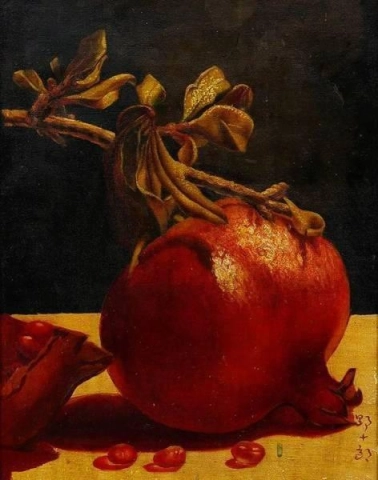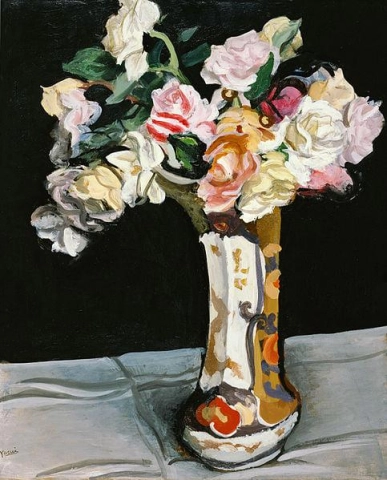Hand-painted painting reproductions - Movements - Yōga painting
Imagine owning a museum-worthy piece of art, created by the greatest artists in history and reproduced by passionate and experienced painters. At POD, we offer you the opportunity to make that dream a reality. We reproduce the works of art of your favorite painters from the Yōga painting art movement in the smallest details, so that you can enjoy them in your own home.
Our reproductions are made by experienced artists who use the best materials and techniques. We are committed to providing you with works of art of the highest quality, which will bring joy and inspiration to your family for generations to come.
The Yōga movement, also known as Western-style painting in Japan, represents a fascinating chapter in the history of Japanese art, marked by its introduction and adaptation of European techniques and styles. Emerging during the late 19th century, Yōga, which translates to "Western painting," signifies Japan's engagement with Western art practices and its integration into the country's rich artistic tradition.
At its inception, the Yōga movement was a response to the influx of Western influences following the Meiji Restoration, a period during which Japan opened its doors to the world after more than two centuries of isolation. This period of intense modernization saw the introduction of Western artistic techniques, including oil painting, perspective, and realistic portrayal, which were markedly different from Japan’s traditional art forms such as Ukiyo-e and Sumi-e.
Central to the Yōga movement was the adoption and adaptation of Western painting methods. Japanese artists trained in Europe brought back knowledge of oil painting, perspective, and the use of light and shadow, which were revolutionary compared to the flat, stylized aesthetics of traditional Japanese art. These artists were instrumental in introducing new techniques and concepts to Japan, profoundly influencing the development of modern Japanese art.
A significant aspect of Yōga is its focus on realism and naturalism. Unlike traditional Japanese art, which often emphasized stylization and abstraction, Yōga artists sought to depict the world with accuracy and detail. This emphasis on realistic representation allowed Japanese artists to explore new themes and subjects, including landscapes, portraits, and historical scenes, all rendered with a Western sensibility.
One of the key figures in the Yōga movement was Yokoyama Taikan, whose work exemplified the blending of Western techniques with Japanese themes. Taikan, along with other prominent artists such as Hashimoto Gaho and Fujishima Takeji, played a crucial role in developing and popularizing Yōga. Their works often showcased a fusion of Western artistic methods with traditional Japanese subjects, creating a unique style that bridged the gap between East and West.
The Yōga movement also saw the establishment of institutions dedicated to the promotion and education of Western-style painting. Art schools, such as the Tokyo Fine Arts School (now Tokyo University of the Arts), were founded to train artists in Western techniques. These institutions became crucial in fostering a new generation of Japanese artists who were skilled in both Western and traditional Japanese art forms.
Despite its focus on Western techniques, Yōga was not a mere imitation of European art. Japanese artists incorporated their own cultural perspectives and aesthetics, resulting in a distinctive style that reflected the complex interplay between Japanese and Western influences. This synthesis is evident in the works of artists who used Western methods to explore traditional Japanese themes, blending the two traditions in innovative and compelling ways.
As Japan continued to modernize and industrialize, the Yōga movement evolved to reflect the changing social and cultural landscape. The movement’s early emphasis on realism gradually gave way to more diverse styles and approaches, including impressionism, expressionism, and abstract art. This evolution mirrored the broader trends in global art movements, highlighting Japan’s growing role in the international art scene.
In addition to its impact on Japanese art, the Yōga movement played a significant role in shaping Japan’s cultural identity during a time of rapid change. By integrating Western artistic practices with traditional Japanese aesthetics, Yōga artists contributed to a broader dialogue about Japan’s place in the modern world. Their work not only expanded the possibilities of Japanese art but also helped to establish a distinctive national identity that embraced both tradition and modernity.
Today, the legacy of the Yōga movement continues to be celebrated in Japan and beyond. Museums, galleries, and art institutions showcase the works of Yōga artists, highlighting their contributions to the development of modern Japanese art. The movement’s influence can be seen in the work of contemporary Japanese artists who continue to explore the intersection of Western and Japanese art traditions.
In summary, the Yōga movement represents a significant period in Japanese art history, characterized by the introduction and adaptation of Western painting techniques and styles. Through its focus on realism, naturalism, and the blending of Western and Japanese aesthetics, Yōga played a crucial role in shaping modern Japanese art. Its legacy endures as a testament to the dynamic interplay between cultural traditions and artistic innovation, reflecting Japan’s ongoing engagement with both its heritage and the wider world.







